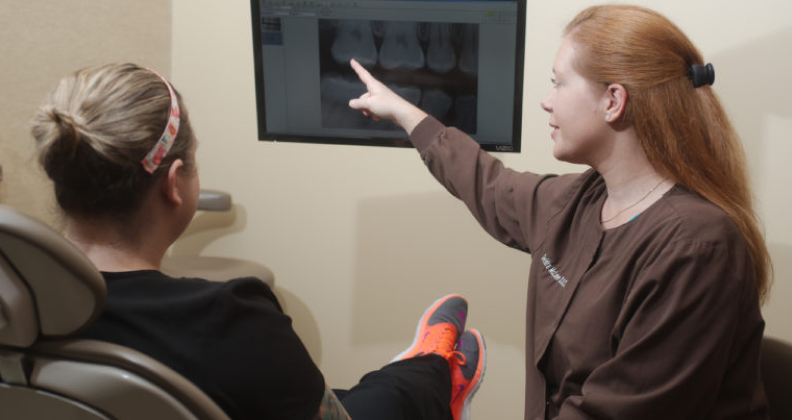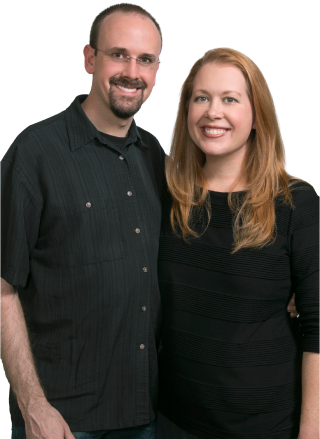
How do I become a new patient?
Call for an appointment: 512.292.8002.
Prior to your appointment, please fill out the new dental patient forms by clicking on the Patient Forms link to the left, or in the Patient Info menu item above. To allow our team adequate time to prepare for your appointment and verify your insurance coverage, we request that you complete the forms no later than three business days prior to your reserved appointment time.
On your first visit you will meet with Dr. Deidra or Dr. James, and we will discuss any concerns you have about your teeth or smile. We will thoroughly examine your teeth and gums, take any necessary x-rays and perform several exams including an oral cancer screening. Based on the findings, we will schedule your next visit, which will usually include your professional dental cleaning.
We work with you to develop and discuss all aspects of a personalized treatment plan. This way, you have an overview of your treatment and understand the dentist’s recommendations. Our conservative approach to dental care focuses first and foremost on prevention, empowering patients to play an active role in maintaining the health of their teeth and gums.
Most new patient evaluation visits will take approximately one hour. This appointment is very comprehensive and includes a full oral evaluation, a comprehensive set of x-rays, and a full evaluation of the health of your gums and other connective tissues. We discuss any recommended treatment and discuss any questions or concerns you may have regarding treatment or diagnosis.
Most cleanings are completed at a separate appointment because it is difficult to predict what type of professional dental cleaning is appropriate and how much time we need to reserve with one of our amazing dental hygienists prior to performing a detailed examination of a person’s oral heath.
Recent studies have shown that approximately 40 percent of adults exhibit some degree of periodontal disease, also known as “periodontitis” or “gum disease”. Many others may have moderate to severe gingivitis. For these patients, a more involved cleaning procedure may be necessary to bring the disease under control and mitigate the damage caused by the disease. In order to ensure the appropriate amount of time is scheduled for each patient’s dental cleaning and reduce redundant procedures and unnecessary costs, at the end of your initial examination visit we will prepare a treatment plan and schedule your next appointments, including any necessary dental cleanings .
There are several types of dental x-rays, each serving a different purpose. Panoramic x-rays show the jaw and teeth in their entirety and are helpful in diagnosing malformations, identifying missing or extra teeth, revealing chronic infections, and are also useful in planning for dentures, partials, braces, or extractions. Bitewing x-rays show the upper and lower back teeth and the areas in-between the teeth. These x-rays are used to check for decay between the teeth and also show bone loss when gum disease is present. A third type of x-ray, a periapical, gives a close-up view of one or more teeth in their entirety and may be used to diagnose various dental maladies like a tooth or root fracture or an infection.
Some patients may be concerned about radiation exposure while taking dental x-rays. Our office utilizes digital radiography techniques, which reduce patient exposure to radiation by as much as 90% when compared with traditional film x-rays. A routine set of x-rays exposes patients to less than one day’s worth of natural background radiation. Other benefits of digital radiography include greater diagnostic proficiency and less impact on the environment.
Statistically, side effects from dental x-ray exposure are exceptionally rare, while consequences and complications related to undiagnosed dental disease are very common, and often preventable with early detection using dental x-rays.
Why might I need treatment when my teeth feel fine?
While some dental issues may “warn” you that something needs attention by sensations such as sensitivity to cold or sweets, aching in the teeth or gums, tenderness to chewing or biting, or redness, bleeding, and swelling of the gums, many dental problems including cavities, cracked teeth, and gum disease can progress without becoming painful until they are fairly advanced, often necessitating more complex treatment.
In the example of a dental cavity, early identification will typically mean resolution with a small filling, whereas waiting for the cavity to start hurting before getting it addressed may mean the need a larger filling, crown, root canal therapy, or even loss of the entire tooth. In many cases, with regular checkups and x-rays, a weakening area in the tooth enamel may be identified early enough that measures can be taken to prevent it from becoming a cavity in the first place.
How much will my insurance cover?
The answer to this question depends on several different factors. Every insurance plan is different and the basis for payments varies greatly from plan to plan. Providing us with your dental insurance information at least three business days prior to your reserved appointment should allow us time to verify your coverage and provide you with a cost estimate before your appointment. We can also request a pre-determination to obtain an estimate from the insurance company prior to performing treatment. Remember, the insurance carrier makes the final determination of benefit payments and we cannot guarantee insurance coverage or benefits. Many doctors and dentists file insurance as a courtesy to patients. Your insurance policy is an agreement between you and the insurance carrier and any fees not paid by the plan are the responsibility of the patient. Refer to your coverage handbook to learn more about your dental benefits.
In the vast majority of cases, patients may return to their normal daily routine after dental treatment is completed. Even if you receive nitrous oxide (laughing gas) during your procedure, we expect you should be able to return to your normal routine. Caution should be taken, especially in young children, to not bite or chew the lip or tongue of the anesthetized area. If you have a tooth extracted, you will be encouraged to minimize strenuous or stressful activity for the remainder of the day. Patients who have had conscious sedation treatment should take the remainder of the day to rest and recover and must be accompanied by a trusted companion.
At McLane Family Dental, we are honored to provide exceptional dental care to everyone in Austin Texas. Give us a call today to schedule an appointment with a dentist from our team!


